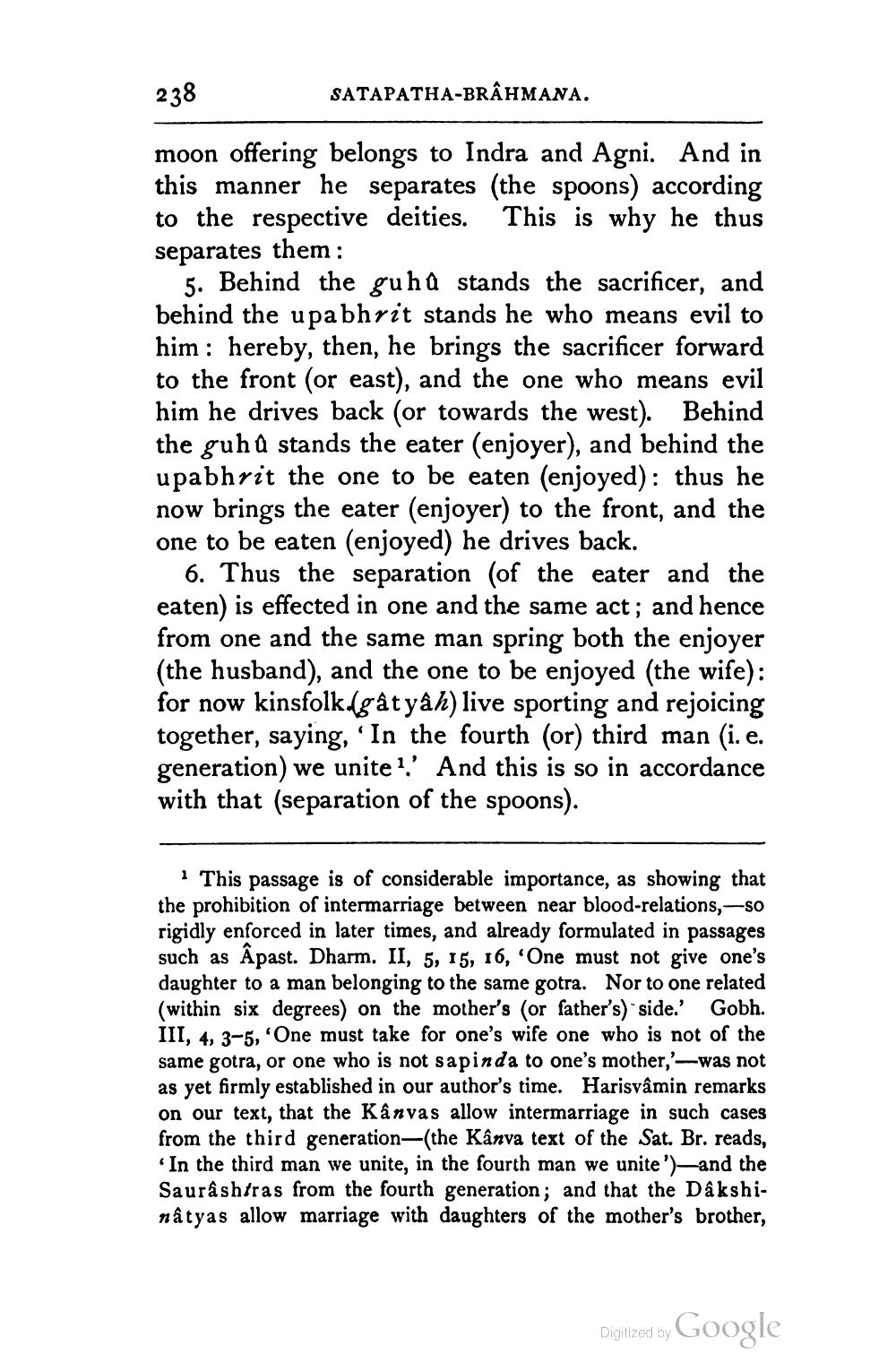________________
238
SATAPATHA-BRAHMANA.
moon offering belongs to Indra and Agni. And in this manner he separates (the spoons) according to the respective deities. This is why he thus separates them:
5. Behind the guhů stands the sacrificer, and behind the upabhrit stands he who means evil to him: hereby, then, he brings the sacrificer forward to the front (or east), and the one who means evil him he drives back (or towards the west). Behind the guh û stands the eater (enjoyer), and behind the upabhrit the one to be eaten (enjoyed): thus he now brings the eater (enjoyer) to the front, and the one to be eaten (enjoyed) he drives back
6. Thus the separation (of the eater and the eaten) is effected in one and the same act; and hence from one and the same man spring both the enjoyer (the husband), and the one to be enjoyed (the wife): for now kinsfolkdgâtyâh) live sporting and rejoicing together, saying, 'In the fourth (or) third man (i. e. generation) we unite?' And this is so in accordance with that (separation of the spoons).
This passage is of considerable importance, as showing that the prohibition of intermarriage between near blood-relations,-SO rigidly enforced in later times, and already formulated in passages such as Apast. Dharm. II, 5, 15, 16, 'One must not give one's daughter to a man belonging to the same gotra. Nor to one related (within six degrees) on the mother's (or father's) side. Gobh. III, 4, 3-5, 'One must take for one's wife one who is not of the same gotra, or one who is not sapinda to one's mother,' was not as yet firmly established in our author's time. Harisvâmin remarks on our text, that the Kanvas allow intermarriage in such cases from the third generation-(the Kânva text of the Sat. Br. reads,
In the third man we unite, in the fourth man we unite')—and the Saurashtras from the fourth generation; and that the Dakshinatyas allow marriage with daughters of the mother's brother,
Digitized by Google




